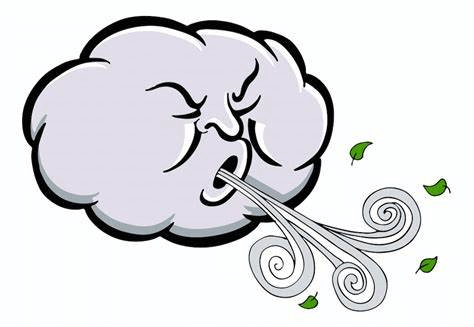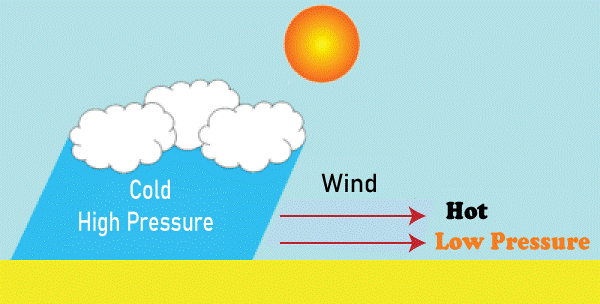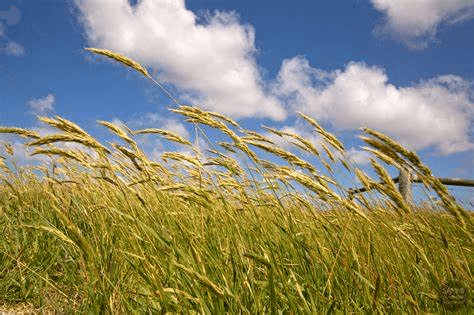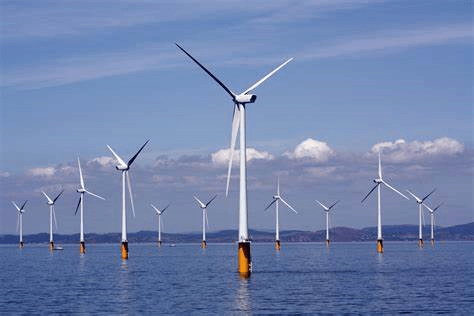Wind DefinitionThe Wind is defined as the movement of air from an area of high pressure to an area of low pressure. It is an important natural phenomenon that has significant effects on our planet. The Wind is a crucial factor in shaping our climate and plays a crucial role in the weather patterns we experience. Understanding the Wind's characteristics, causes, and effects can help us better understand and predict weather patterns and use Wind as an energy source. Wind can be defined in several ways, depending on the context in which it is being discussed. For example, Wind can be described in speed, direction, or strength. 
What Causes Wind?Differences in air pressure create the Wind. In general, air moves from high-pressure to low-pressure areas. The greater the pressure difference, the stronger the Wind will be. The causes of these pressure differences can vary depending on the situation. For example, winds near the equator are caused by differences in temperature between the equator and the poles. Warm air rises near the equator, creating an area of low pressure, while cold air sinks near the poles, creating an area of high pressure. The air movement from the high-pressure areas near the poles to the low-pressure areas near the equator creates the trade winds, which blow from east to west across the equatorial regions. In other situations, pressure differences may be caused by the interaction of air masses with different temperatures or moisture levels. For example, in the United States, the prevailing winds in the mid-latitudes are the westerlies, which blow from west to east. These winds are caused by the interaction of cold, dry air from Canada with warm, moist air from the Gulf of Mexico. The collision of these air masses creates a low-pressure zone, which causes air to flow from west to east. Another factor contributing to Wind's causes is the Earth's rotation. As the Earth rotates, it creates a Carioles effect that causes air to deflect to the right in the northern hemisphere and the left in the southern hemisphere. This deflection causes Wind to move in a circular pattern, which is why hurricanes and other large storms tend to rotate. In addition to temperature and the rotation of the Earth, another cause of Wind is the presence of large bodies of water. The surface of the Earth is covered by 70% water, and this water has a significant impact on the movement of air. When air moves over a large body of water, it can pick up moisture, which can then be carried over land. This can result in the formation of clouds and precipitation. The topography of the Earth's surface also contributes to the causes of Wind. Mountains, hills, and other elevated areas can cause the air to rise, creating an area of low pressure. Conversely, valleys and other low-lying areas can cause the air to sink, creating an area of high pressure. The difference in pressure between these areas can cause Wind to move from the high-pressure area to the low-pressure area. Another cause of Wind is the presence of weather fronts. Weather fronts are the boundaries between air masses with different temperatures and humidity levels. When these air masses meet, they can create areas of low pressure, which can cause Wind to move from the high-pressure area to the low-pressure area. The movement of air can result in the formation of clouds and precipitation. Human activity can also contribute to the causes of Wind. Burning fossil fuels and other industrial processes can release large amounts of greenhouse gases into the atmosphere. These gases can trap heat and cause the temperature of the Earth's surface to rise. This can result in changes to the global climate, including wind patterns. 
Characteristics of WindThe characteristics of Wind can vary depending on several factors, including the air's temperature and moisture content, the land's topography, and the Earth's rotation. For example, in areas with high temperatures and low humidity, such as deserts, winds can be strong and dry, increasing the risk of wildfires. Winds can be channeled and amplified in areas with complex topography, such as mountains, creating strong gusts and turbulence. Wind significantly affects the environment, including the climate, the weather, and ecosystems. Wind can affect the distribution of moisture, heat, and other important environmental factors, affecting the growth and survival of plants and animals. Wind can also affect the movement of pollutants, such as dust and smoke, negatively impacting human health and the environment. 1. Wind SpeedWind speed is the rate at which air is moving, and it is typically measured in meters per second (m/s) or miles per hour (mph). The speed of the Wind can vary greatly depending on a range of factors, including the temperature gradient, the pressure gradient, and the presence of other atmospheric conditions such as moisture or turbulence. An anemometer is one of the most common instruments to measure wind speed. Anemometers can come in different forms, including cup anemometers, which measure wind speed by counting the number of rotations of a set of cups attached to a rotor, or sonic anemometers, which use sound waves to measure wind speed. Wind speed can have a significant impact on the environment and human society. High wind speeds can cause damage to property and infrastructure, as well as pose a threat to human safety. Wind speeds can also affect weather patterns, ocean currents, and the movement of wildlife. 2. Wind DirectionWind direction refers to the direction from which the Wind is blowing, typically measured in degrees from true north or magnetic north. Various factors influence wind direction, including the Earth's rotation, pressure systems, and terrain. Wind direction can be measured using a wind vane, a simple device that uses a pointer to indicate the Wind's direction. Wind direction is an important factor to consider when predicting weather patterns. It can provide information about the movement of weather systems and the likelihood of storms or other severe weather events. 3. Wind StrengthWind strength refers to the force of the Wind, typically measured in terms of its pressure or the amount of force it exerts. The strength of the Wind can be influenced by a range of factors, including the speed, direction, and turbulence of the air. One way to measure wind strength is by using a barometer, an instrument measuring atmospheric pressure. Changes in atmospheric pressure can indicate changes in wind strength, as high-pressure systems can lead to stronger winds. 4. Wind VariabilityWind variability refers to changes in wind speed and direction over time. Various factors, including other atmospheric conditions such as moisture or turbulence, can influence wind variability. Wind variability is an important factor to consider when predicting weather patterns, as it can provide information about the likelihood of sudden changes in weather conditions. 5. Wind TurbulenceWind turbulence refers to the chaotic movement of air caused by wind speed and direction changes. Various factors, including changes in temperature or pressure or the presence of other atmospheric conditions, such as moisture or turbulence, can cause turbulence. Turbulence can have a significant impact on the environment and human society, as it can cause damage to property and infrastructure and pose a threat to human safety. 6. Wind SeasonalityWind seasonality refers to the pattern of changes in wind speed and direction over time. Various factors, including temperature, pressure changes, or other atmospheric conditions, such as moisture or turbulence, can influence wind seasonality. Wind seasonality is an important factor to consider when predicting weather patterns, as it can provide information about the likelihood of changes in weather conditions over different seasons. Other CharacteristicsOther characteristics of Wind include its duration, which refers to the length of Wind blowing; its spatial extent, which refers to the area over which Wind is blowing; and its frequency, which refers to how often Wind occurs in a particular location. 
Effects of WindThe Wind is a natural phenomenon that can positively and negatively affect the environment and human society. The Wind has been essential to our planet's ecosystem for millions of years, from shaping landscapes to powering turbines. However, it can also cause significant damage to property and infrastructure, as well as pose a threat to human health and safety. Positive Effects of Wind
Negative Effects of Wind
Wind energyWind turbines, which convert the energy in Wind into electricity, are an increasingly important renewable energy source. Wind energy is a renewable energy source derived from the natural movement of air masses in the Earth's atmosphere. It is considered one of the most promising sources of clean and sustainable energy, with the potential to significantly reduce greenhouse gas emissions and mitigate the effects of climate change. This energy can be harnessed using various devices that convert Wind's kinetic energy into mechanical or electrical energy. Wind energy has been used for centuries to power windmills and sailboats, and today it is increasingly used to generate electricity. Modern wind turbines are much more advanced and efficient than traditional windmills and can produce significant amounts of electricity to power homes, businesses, and communities. According to the International Energy Agency (IEA), wind energy is the second largest source of renewable electricity after hydropower, and it is expected to continue growing in the coming years. 
History of Wind EnergyWind energy has been used for various purposes throughout history. The earliest known use of wind power dates back to around 5,000 BCE, when the ancient Egyptians used Windto sail boats along the Nile River. Later, the Persians and Chinese developed windmills for grinding grain and pumping water. Windmills became widespread in Europe during the Middle Ages and were used for milling grain, pumping water, and powering machines in various industries. The first electricity-generating wind turbine was built in Scotland in 1887 by James Blyth, an engineering professor at Anderson's College in Glasgow. This wind turbine had a rotor diameter of 33 feet and generated about 2.5 kW of electricity. In the early 20th century, wind turbines were used mainly for providing electricity to remote areas, such as rural farms and ranches. However, with the advent of fossil-fueled power plants, wind energy fell out of favor and was largely replaced by coal, oil, and natural gas. It was not until the 1970s and 1980s that wind energy started to make a comeback as a viable source of electricity. The oil crisis of the 1970s and the growing concerns over environmental pollution and climate change led many countries to seek alternative energy sources. In the 1980s, Denmark emerged as a leader in wind energy and began installing large-scale wind turbines for electricity generation. Today, Denmark has the highest share of wind energy in its electricity mix, with more than 40% of its electricity coming from Wind. Wind Energy TechnologyWind energy is harnessed by using various devices that capture Wind's kinetic energy and convert it into mechanical or electrical energy. The most common device used for this purpose is the wind turbine, which consists of a rotor, a shaft, a gearbox, and a generator. The rotor is part of the wind turbine that captures the Wind's kinetic energy and converts it into rotational motion. The rotor consists of two or three blades attached to a hub mounted on a shaft. The length of the blades can vary from a few meters to more than 100 meters, depending on the size of the turbine. The shaft is the part of the wind turbine that connects the rotor to the gearbox. The gearbox increases the rotor's rotational speed and transfers the mechanical energy to the generator. The generator is the part of the wind turbine that converts the mechanical energy into electrical energy. The electricity generated by the wind turbine is transmitted to the grid or a battery storage system. ConclusionThe wind is the air movement from high to low pressure caused by various factors, including temperature, pressure, and the Earth's rotation. It is a natural phenomenon that has positive and negative effects on the environment and human society. The Wind is a renewable energy source that has the potential to reduce our reliance on fossil fuels and contribute to a more sustainable future. Wind energy is produced by harnessing the power of wind turbines, which convert the Wind's kinetic energy into electricity. Overall, understanding the behavior of Wind is essential for predicting weather patterns, mitigating damage to property and infrastructure, and harnessing its potential as a renewable energy source. By measuring and analyzing wind data, scientists and researchers can better understand this complex natural phenomenon and develop strategies to minimize its negative impact while maximizing its potential benefits. It is important to continue research and development in wind energy, focusing on improving the efficiency and effectiveness of wind turbines and reducing the negative impacts of wind energy production on the environment and wildlife. In addition, efforts should be made to educate the public about the benefits and drawbacks of wind energy and encourage adopting sustainable practices in the energy sector.
Next TopicWind Energy Definition
|
 For Videos Join Our Youtube Channel: Join Now
For Videos Join Our Youtube Channel: Join Now
Feedback
- Send your Feedback to [email protected]
Help Others, Please Share










